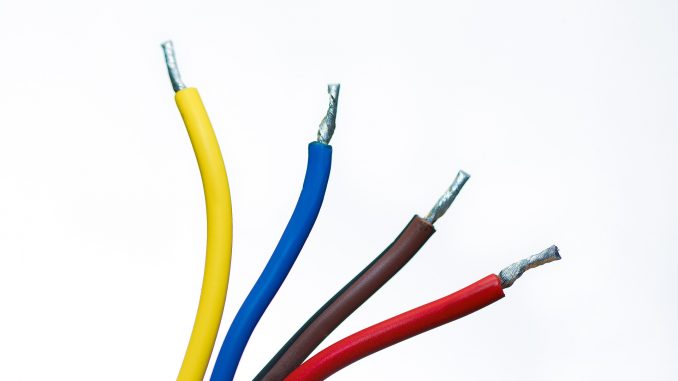
Anyone who has looked inside an electrical box should know that various wires have a different electrical wiring color. These colors indicate what each wire is used for and, if you are doing any type of electrical work, you should be familiar with what they mean. Using the wrong color wire can result in a dangerous situation. Read on to find out what you need to know about different electrical wiring color.
Different Electrical Wiring Colors
 Black Wire: It is ideal for hot wires and switch legs, not as a neutral or ground connection. It also feeds a switch or outlet.
Black Wire: It is ideal for hot wires and switch legs, not as a neutral or ground connection. It also feeds a switch or outlet.
Red Wires: These are also used for hot wires and switch legs (often in ceiling fans). They are the second hot wire in 200V installations and can interconnect the wire between two hardwired smoke detectors.
Blue and Yellow Wires: These are utilized as hot wires and are usually pulled in conduit. The blue wires are typically for travelers in three and four way switch applications and are also used as switch legs for lights and fans. Yellow wires are for switch legs as well, controlling things like lights, fans and switched outlets.
Green and Bare Copper Wires: Green and copper wires are only for grounding devices and are bonded to junction boxes and appliance connections for safety.
Wire Color Exceptions
 When dealing with different electrical wiring colors, there are certain exceptions where the general rules do not apply. An example of this is when a white wire in a two conductor cable is used as a second hot wire on a 240V appliance or outlet connection. White wires can also be for a switch leg for lighting or running a three-way switch application.
When dealing with different electrical wiring colors, there are certain exceptions where the general rules do not apply. An example of this is when a white wire in a two conductor cable is used as a second hot wire on a 240V appliance or outlet connection. White wires can also be for a switch leg for lighting or running a three-way switch application.
In cases where the general rules of different electrical wiring color don’t apply, wires should always be marked to indicate its purpose. For white wires, they should be marked if they are not only utilized as a neutral wire.. A good way to do this is to mark the end of the wire with black or red electrical tape.
If you are working with electrical wires, you should be aware that not all wires are safe to as substitutions. Before substituting one wire color with another, be sure to research carefully to make verify if it is an appropriate replacement and will not cause electrical shock or fire hazard.
If you are doing an electrical equipment in your house, or if you work with electricity on a professional level, it is important to be aware of different electrical wire color. This way, you will know if your home is wired safely and you will be able to identify its purpose.. Good luck being able to identify these wire colors in the safe wiring of your home or office.

